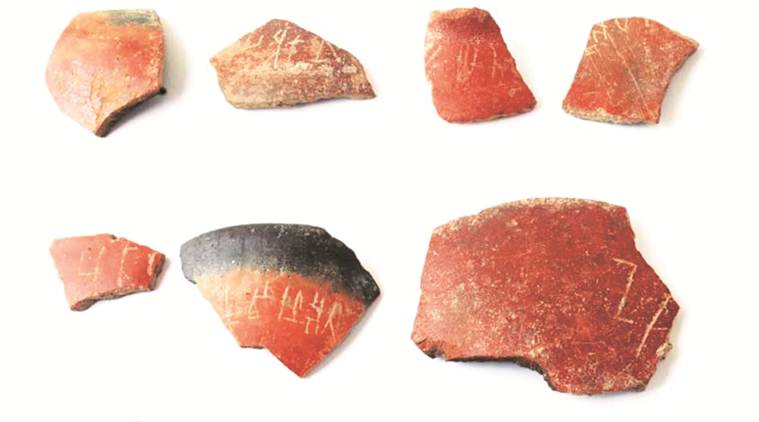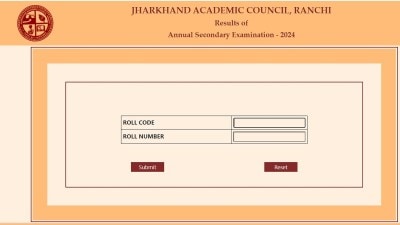- India
- International
Tamil Nadu govt to step up research, excavations at Keeladi
It states that Tamils attained literacy at least 2,600 years ago, which reduces the gap between the Sangam era and the Indus Valley Civilisation (1,500 BCE).
 Samples of potsherds collected from the Keeladi archaeology site. (Courtesy: Tamil Nadu State Archaeology Department)
Samples of potsherds collected from the Keeladi archaeology site. (Courtesy: Tamil Nadu State Archaeology Department)
A WEEK after a report published by the Tamil Nadu State Archaeology Department detailed evidence that the Sangam era of South India and the Tamil Brahmi script dated back to the 6th century BCE, the state government has decided to strike a tripartite agreement with the Madurai Kamaraj University and Harvard University to step up research and excavations at Keeladi in Sivagangai district.
The September 19 report, titled ‘Keeladi-An Urban Settlement of Sangam Age on the Banks of River Vaigai’, pushes back the history of literacy in South India from the previously assumed 3rd century BCE. It states that Tamils attained literacy at least 2,600 years ago, which reduces the gap between the Sangam era and the Indus Valley Civilisation (1,500 BCE).
Changing previous theories, the latest findings state that, like in the Gangetic plains, “there were large scale brick structures and associated artefacts of high economic value”, suggesting an active urban life as early as 6th century BC in Tamil Nadu and south India.
The findings have gained significance as the Keeladi project was neglected by the Archaeological Survey of India (ASI), despite the unearthing crucial leads in its three-phase excavations started in 2014.
The Madurai Kamaraj University has officially confirmed that the state archaeology department has approached them for advanced studies at Keeladi. A memorandum of understanding in this regard will be signed soon. The university said it will also continue excavations at the sites at Mannalur and Konthagai, and the findings will be scientifically ascertained with the help of an advanced laboratory at Harvard University.

K Rajan, a prominent scholar who teach archaeology at Puducherry Central University, told The Indian Express, “Now we have a total of 20 samples that go back to the 6th century BCE to prove that we had a writing system in South India during the period. Even though we couldn’t establish a direct link to the Indus Valley Civilisation, the graffiti marks among these samples from Keeladi indicates that we may be inching towards establishing a link in the next few years. In South India, we have had an Iron Age between 2000 BCE to 600 BCE. So it is a hypothesis that the graffiti marks we found from the region may have links to the Indus Valley period.”
The report states that there were 56 Tamil Brahmi-inscribed potsherds from Keeladi. According to T Udhayachandran, the commissioner of the state archaeology department, many of these letters were engraved by the owners after purchasing the pots, and not while they were being made.
“This indicates a high literacy of the contemporary society that lived in the 6th century BCE in this region,” Udhayachandran said.
He said many other items they excavated from Keeladi such as spindle whorls, sharply pin-pointed bone tip tools used for design creations, hanging stones of the yarn, terracotta spheres and even copper needles attest the various stages of weaving industry from spinning, yarning, looming and weaving in that period with an active industrial activity in the area.
Apr 19: Latest News
- 01
- 02
- 03
- 04
- 05






































